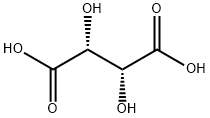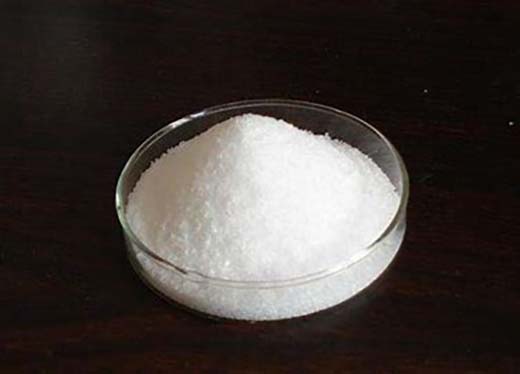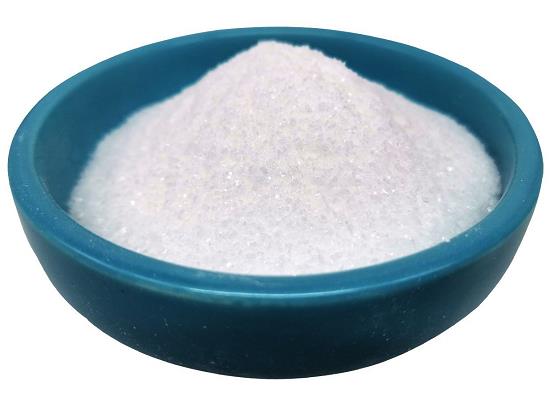L(+)-Tartaric acid: Natural Sources and Physiological Role in Grape Development
General Description
L(+)-Tartaric acid is a key organic acid found predominantly in grapes, playing a vital role in determining the fruit's overall acidity and flavor profile. Its accumulation occurs primarily during the early stages of berry development, with synthesis taking place in the cytosol and potential storage in the vacuole. Genetic studies have uncovered quantitative trait loci linked to L(+)-Tartaric acid levels, emphasizing the complexity of its biosynthetic pathway. Beyond grape development, L(+)-Tartaric acid contributes significantly to physiological processes, stabilizing the apoplastic redox state and engaging in antioxidant defense mechanisms during ripening. Ultimately, L(+)-Tartaric acid is crucial for enhancing grape quality and enriching their flavor, while its presence has also been noted in various other fruits.

Figure 1. L(+)-Tartaric acid
Natural Sources
L(+)-Tartaric acid is predominantly found in grapes, where it is a significant organic acid contributing to the fruit's overall acidity and flavor profile. Initially, it was believed that L(+)-Tartaric acid was uniquely accumulated in grapes, but further research has revealed its presence in a variety of other fruits. Studies have documented the occurrence of L(+)-Tartaric acid in fruits such as avocados, lychees, sweet cherries, blueberries, and even tamarind. Notably, certain citrus fruits also contain L(+)-Tartaric acid, although the levels vary considerably among different species. The discovery of L(+)-Tartaric acid in these fruits highlights the importance of this organic acid beyond grapevines, demonstrating its broader role in the fruit composition of various species. 1
Accumulation Patterns in Grapes
The accumulation of L(+)-Tartaric acid in grape berries typically occurs during the initial stages of berry development, a phase characterized by rapid cell division. Within the grapes, L(+)-Tartaric acid synthesis is believed to take place in the cytosol of plant cells. Despite this primary location for biosynthesis, recent studies suggest the potential involvement of other cellular compartments, such as the vacuole, where L(+)-Tartaric acid is stored once synthesized. This process is not merely dependent on individual factors but is influenced by various agronomic conditions like light exposure and water status. Interestingly, while environmental conditions exhibit some effects on L(+)-Tartaric acid levels, no singular cultural practice has been established that can reliably enhance or diminish its concentration in grapes at harvest. 1
Genetic Insights into Accumulation
Research into the genetics of grape berry acidity, which includes L(+)-Tartaric acid, has surged in recent years. Several quantitative trait loci (QTL) associated with L(+)-Tartaric acid levels have been identified, reflecting how genetic diversity impacts its accumulation. Notably, significant breakthroughs have been achieved in understanding the relationships between genetics and acidity traits, including total titratable acidity. Interestingly, findings indicate that L(+)-Tartaric acid levels may not be easily traced to single genetic markers due to the complexity of its biosynthetic pathway. Advances in genome-wide association studies (GWAS) have allowed researchers to explore large grapevine germplasm collections, facilitating a deeper understanding of the polymorphic traits that influence L(+)-Tartaric acid accumulation within grape varieties. This ongoing exploration into the genetics surrounding L(+)-Tartaric acid will continue to provide critical insights into its natural sources and resulting concentrations in grapes and other fruits. 1
Physiological Role in Grape Development
L(+)-Tartaric acid plays a crucial role in the physiological processes of grape berry development. In young grape berries, high levels of ascorbate, predominantly in the form of dehydroascorbate, are involved in the biosynthesis of various organic acids, including L(+)-Tartaric acid. Researchers have identified a significant correlation between the total ascorbate levels and the accumulation of L(+)-Tartaric acid during early berry development. This suggests that L(+)-Tartaric acid may serve as a storage form of excess ascorbate or dehydroascorbate when produced in high quantities. Therefore, the biosynthesis of L(+)-Tartaric acid can be considered a regulatory mechanism where it acts as an osmolyte, helping to maintain cellular osmotic balance, particularly during periods of high ascorbate synthesis. Notably, L(+)-Tartaric acid accumulation is also observed in grapevine leaves, reinforcing its significance in the plant's overall metabolic network. 2
Role in Apoplast Dynamics
In the apoplastic space of grape berries, L(+)-Tartaric acid coexists with other organic acids, sugars, and cations, playing a vital role in maintaining the redox environment. The presence of ascorbate oxidase within the cell wall leads to the oxidation of ascorbate, resulting in an accumulation of L(+)-Tartaric acid, especially when the ascorbate pool is highly oxidized. This accumulation occurs alongside a decline in the expression of ascorbate oxidase genes during grape berry development, suggesting a coordinated regulatory mechanism. The relationship between ascorbate and L(+)-Tartaric acid underscores the latter's potential role in stabilizing the apoplastic redox state and mitigating oxidative stress. Additionally, L(+)-Tartaric acid may participate in reactions that assist in cell wall softening, an essential process during fruit ripening, contributing to the overall quality and taste of the grapes. 2
Antioxidant Defense Mechanisms
L(+)-Tartaric acid is not only vital for development and cellular balance but also plays a role in the antioxidant metabolism of grapes. The oxidative burst observed in grape skins during ripening is characterized by increased reactive oxygen species, including superoxide and hydrogen peroxide. L(+)-Tartaric acid, through its interactions with other antioxidants, helps to modulate these oxidative effects, ensuring the balance between antioxidant defense and reactive species. Hydrogen peroxide, a significant product of oxidative stress, is crucial for signaling pathways that advance grape ripening. The coordinated expression of superoxide dismutase isoforms during the ripening process highlights the importance of L(+)-Tartaric acid in cellular signaling pathways that facilitate ripening and fruit development. By contributing to the antioxidant metabolism and the regulation of reactive oxygen species, L(+)-Tartaric acid is integral to the overall health and maturation of grape berries, ultimately influencing their quality and flavor profile. 2
Reference
1. Debolt S, Melino V, Ford CM. Ascorbate as a biosynthetic precursor in plants. Ann Bot. 2007; 99(1): 3-8.
2. Xuan J, Feng Y. Enantiomeric Tartaric Acid Production Using cis-Epoxysuccinate Hydrolase: History and Perspectives. Molecules. 2019; 24(5): 903.
);Related articles And Qustion
Lastest Price from L(+)-Tartaric acid manufacturers
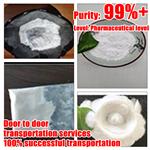
US $1.00/g2024-09-19
- CAS:
- 87-69-4
- Min. Order:
- 1g
- Purity:
- 99%
- Supply Ability:
- 1000kg
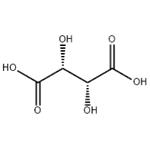
US $0.00-0.00/kg2024-09-19
- CAS:
- 87-69-4
- Min. Order:
- 0.10000000149011612kg
- Purity:
- 99%
- Supply Ability:
- 20tons
